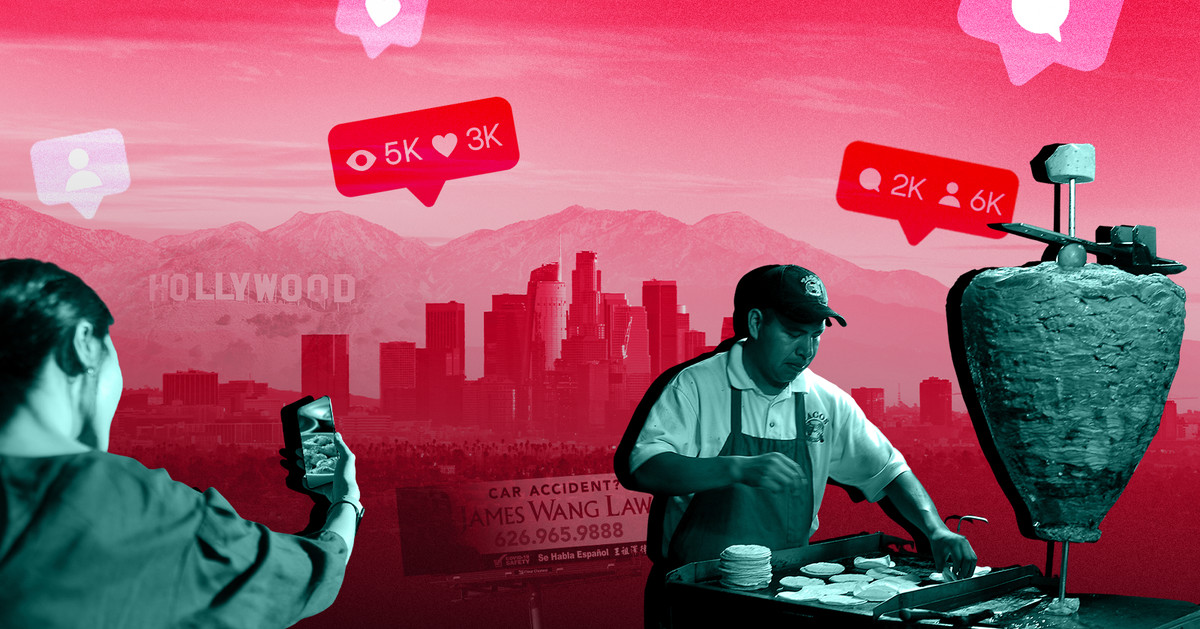
Whether or not one has downloaded TikTok onto their phone or engages regularly with its stream of grabby vertical videos, there’s no denying that the medium has infiltrated Los Angeles’s restaurant scene. As a discovery platform, Angelenos follow food influencers who review restaurants to decide where to dine and see what to expect. From regional Chinese mom-and-pops in the San Gabriel Valley to Michelin-starred fine dining destinations overlooking the Pacific, the sheer number of social media videos covering the Southland’s dining culture grows by the minute.
Feeding that TikTok ecosystem are the food influencers who create snappy social media videos. Individuals with especially robust followings can monetize their work by partnering with local restaurants or national brands to advertise to their audiences. The Federal Trade Commission has rules to make this kind of pay-to-play culture apparent to average consumers, but the distinction between commercialism and genuine criticism is often hard to distinguish. While some influencers benefit from the blurred lines, others go the extra mile to communicate whether the content their followers are consuming is paid for.
The expansive field of influencers can include those eating in the dining room, as well as restaurant workers behind the scenes like chefs and cooks. These highly skilled individuals who create and post social media videos sharing recipes or how-to hacks can garner large and dedicated followings. By becoming influencers in their own right, these restaurant kitchen experts are effectively rewriting the script of what it means to be a celebrity chef in the age of TikTok.
Sometimes, especially for those deep into #FoodTok, it can seem like social media touches everything under the sun. In these moments when the online world feels like one big word-of-mouth commercial, social media analyst Emily Hund reminds herself that “content creation is big,” there are some 11.5 million people in the U.S. who consider themselves full-time professional content creators, after all, “but it’s not a representative sample of the population,” she says. TikTok may seem like the be-all and end-all at this moment, but the medium will likely be replaced by something newer and shinier in due time, especially if the government ultimately bans the app. But if the original food influencers, 2000s-era food bloggers, provided a roadmap for today’s restaurant influencers, the lessons were this: Technological change is inevitable, transparency is essential, and dynamic storytelling will, for better or worse, find its way into the light.
Swipe up to see what’s next.
This post was originally published on this site be sure to check out more of their content








